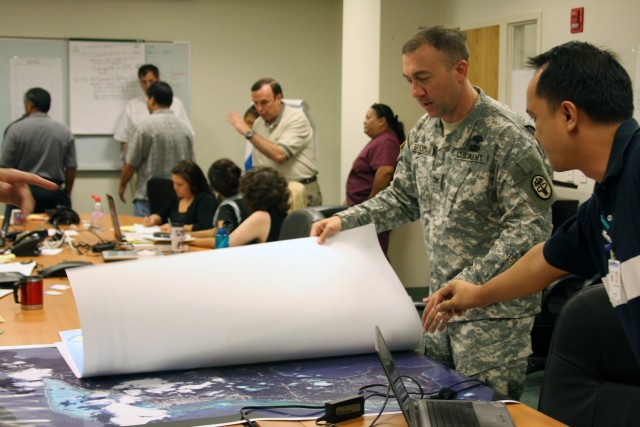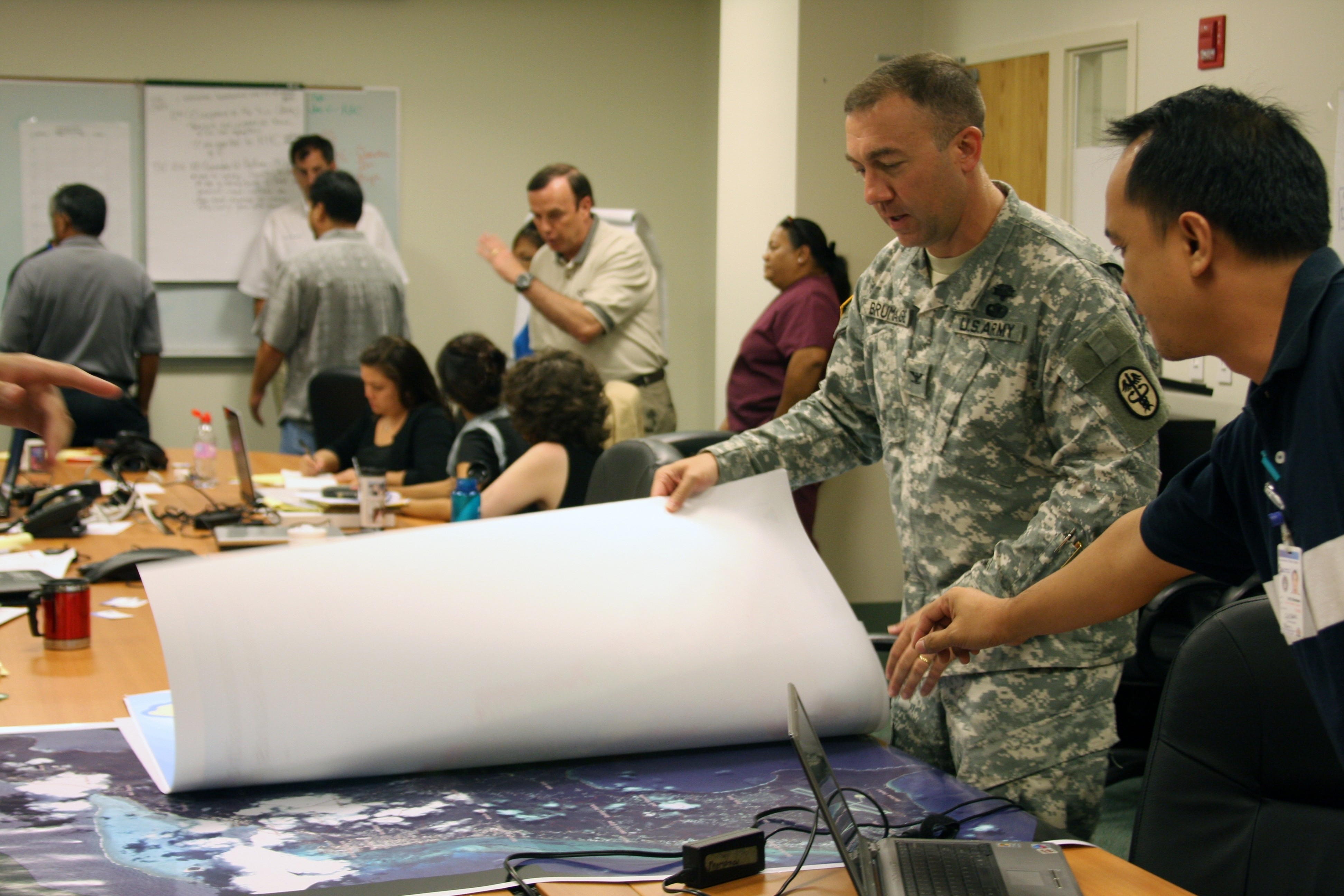
SAIPAN, Northern Marianas -- More reality-based than reality show, a U.S. Pacific partnership tested the U.S. Commonwealth of the Northern Marianas Islands' ability to deal with overwhelming disaster May 22, the first exercise of its kind.
Led by Pacific Regional Medical Command's Chief of Preventive Medicine Col. (Dr.) Michael Brumage, exercise directors simulated an outbreak of avian influenza, commonly called bird flu, on the three commonwealth islands - Saipan, Tinian and Rota.
"This exercise creates a better understanding of what their needs are in the event of a true pandemic here and how we might deliver relief," Brumage said. "The U.S. commonwealth islands have their own pandemic emergency response plan, and this is an opportunity for them to exercise their own plan.
"Unfortunately to conduct exercises like this, it requires a number of resources the islands don't have, which is where we come in," he said.
Using Federal Emergency Management Agency's National Incident Management System (NIMS), a command structure for crises, U.S. and island health officials set up headquarters in Saipan, the largest and most populated of the island chain. Emergency operation centers in the outer islands of Tinian and Rota funneled local disaster information to the headquarters, enabling swift, organized communication to national leadership.
"Drills like this are essential for the preparedness of our local government and the community at large," commonwealth Public Health Secretary Joseph Kevin Villagomez said. "During disaster time, it's very difficult figuring out what we need."
Island officials are experienced in dealing with a number of frequently occurring natural disasters, including typhoons, earthquakes and volcano eruptions.
"A pandemic is a more protracted disaster, lasting weeks or months," Brumage said. "A key part of this exercise was managing emergency responders and staff members efficiently to decrease immediate burn-out."
Preceding the one-day exercise, subject matter experts from the co-located Honolulu Veterans Affairs and Tripler Army Medical Center presented facts about emergency preparedness to members of local health centers and government officials on each island. Topics discussed were the intricacies of NIMS and non-pharmaceutical intervention, such as isolation and quarantine.
"We've gathered valuable information here to prepare us in a pandemic influenza emergency," Rota's Health Center Director Julian Calvo said. "We focused on tying together strategic planning to what is actually happening on the ground on an individual level."
Stephen Yamada, Tripler's infection control and epidemiology officer, said often overlooked in an infectious outbreak is the importance of non-pharmaceutical intervention.
"Once a pandemic starts, more than likely there won't be enough antibiotics for the population," he said. "Also, there more than likely won't be a vaccine against the strain of the virus causing the outbreak. That's where intervention by isolation, quarantine or other infection control measures can be effective in controlling the spread."
The multi-agency exercise team also included members of Joint Task Force for Homeland Defense, Center for Disease Control, Quarantine Station Honolulu, and Pacific Disaster Management Center.
Health and Human Services members participated live from San Francisco, as did staff from the CDC's national influenza stockpile in Atlanta.
Brumage, who is transitioning into his new role as commander of Schofield Barracks Health Clinic, recently organized another prominent first. In March, he led an interagency partnership to send the defense department's entire stock of excess flu shots to U.S.-affiliated islands in the Pacific.
His effort helped immunize tens of thousands of people over millions of miles against the year-round threat of influenza in those tropical environments.

Social Sharing